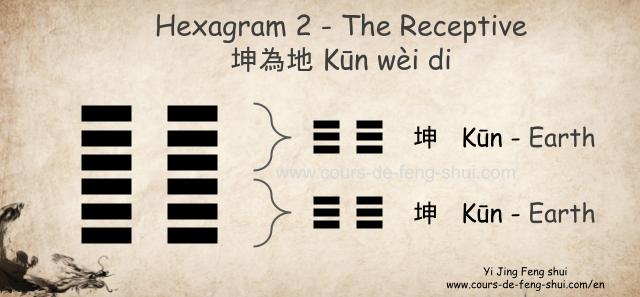
Hexagram 2 of the Yi Jing is composed of the upper trigram ☷坤 Kun (Earth, mother, earth element) and the lower trigram ☷坤 Kun (Earth, mother, earth element).
Interpretation from comments: Docile receptivity, fundamental rest, passive power of realization—these are considered attributes of the Earth.
In Chinese: 坤為地 Kūn Wèi Dì, the English translation is “The Earth, the Receptive.”
Pure Hexagram: The two trigrams that make up the hexagram are identical; the upper trigram and the lower trigram are both Kun, representing the Earth.
Sovereign or calendar hexagram: Hexagram 2 (The Receptive) is associated with the tenth month (November) and the terrestrial branch 亥 Hai.
Jia Zi combination of the hexagram: Hexagram 2 of the Yi Jing is associated with Jia Zi 甲子, the 1st combination of the sexagesimal cycle (hour, day, month, year).
- 甲 Jia, celestial stem Yang Wood
- 子 Zi, terrestrial branch of the Rat
Interpretation of the drawing of hexagram 2 of the Yi Jing
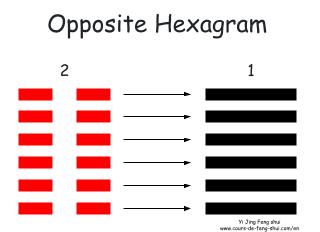
Opposite hexagram (錯卦 Cuo Gua): The opposite hexagram indicates everything that is not, or the opposite of, the solution to the situation.
The opposite hexagram is obtained by replacing the Yin lines with Yang lines and vice versa, resulting in Hexagram 1 – Tian (Heaven).
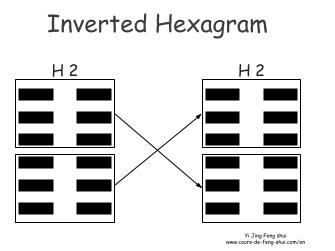
Inverted Hexagram (覆卦 Fu Gua): The permuted hexagram provides information on the origin of the situation.
The permuted hexagram is obtained by swapping the two trigrams.
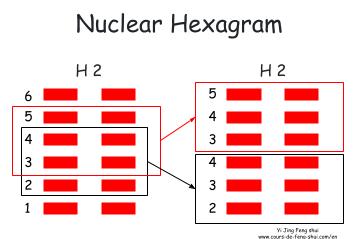
Nuclear (Mutual) Hexagram (互卦 Hu Gua): The nuclear hexagram represents the core of the problem or question.
The nuclear hexagram is obtained by using the four central lines to form two trigrams. In this case, hexagram 2 is itself the nuclear hexagram.
Mutant Hexagram (derived): The mutation of a line results in a new hexagram, which indicates the evolution of the situation.
- Line 6 mutates: the resulting hexagram is H23.
- Line 5 mutates: the resulting hexagram is H8.
- Line 4 mutates: the resulting hexagram is H16.
- Line 3 mutates: the resulting hexagram is H15.
- Line 2 mutates: the resulting hexagram is H7.
- Line 1 mutates: the resulting hexagram is H24.
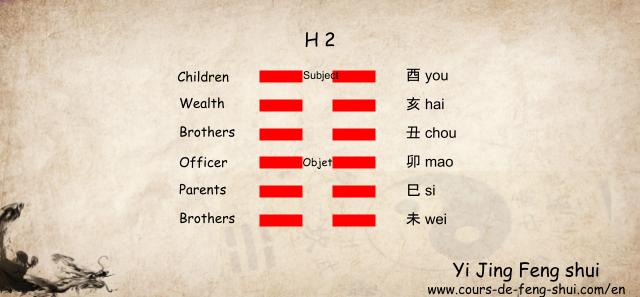
Taoist Yi Jing – Wen Wang Gua
Characteristics of hexagram 2 for the Taoist Interpretation of the Yi Jing using the Wen Wang Gua (Liu yao) divination method:
The lower and upper trigrams are the same (☷坤 Kun), so hexagram 2 is the mother hexagram of the Kun (Earth) family.
The object is placed on the third line, and the subject is placed on the sixth line.
The Six Relatives
- 6th line: 酉 you (Metal Rooster) – Children
- 5th line: 亥 hai (Water Pig) – Wealth
- 4th line: 丑 chou (Earth Ox) – Brothers
- 3rd line: 卯 mao (Wood Rabbit) – Officer
- 2nd line: 巳 si (Fire Snake) – Parents
- 1st line: 未 wei (Earth Goat) – Brothers
Hexagram of Confrontation (Liu Chong or 6 Clashes): The following terrestrial branches clash:
- 丑 chou and 未 wei clash.
- 卯 mao and 酉 you clash.
- 巳 si and 亥 hai clash.